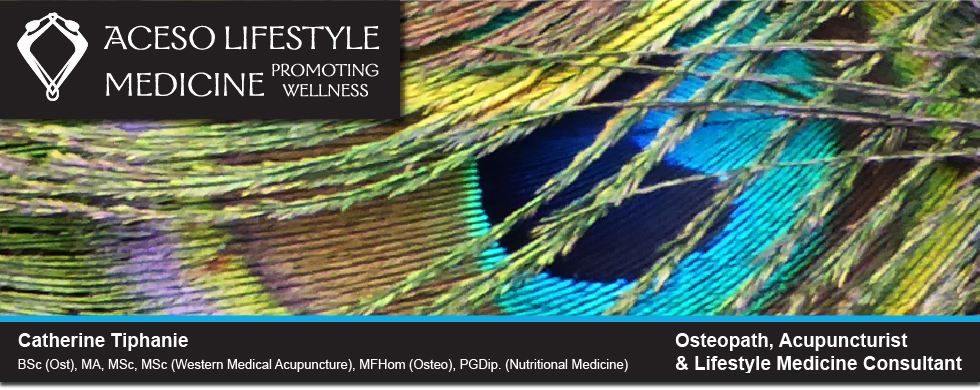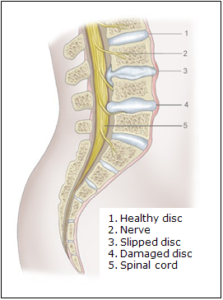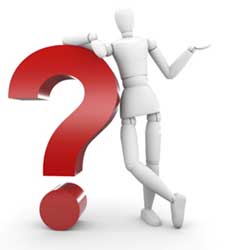
FAQ's
What is the difference between Osteopaths & Chiropractors?
 This is the question I get asked most frequently… From a patient’s perspective there is much similarity between Osteopaths and Chiropractors. They both work with a patient’s entire body, and both use some similar physical techniques. But whilst there are some similarities, there are also differences, as they are independent schools of thought and their approach to a patient case is different.
This is the question I get asked most frequently… From a patient’s perspective there is much similarity between Osteopaths and Chiropractors. They both work with a patient’s entire body, and both use some similar physical techniques. But whilst there are some similarities, there are also differences, as they are independent schools of thought and their approach to a patient case is different.
Chiropractic therapy is actually derived from Osteopathy. Osteopathy was developed by Dr. Andrew Taylor Still in America in 1874; and the Chiropractic discipline was developed by Daniel David Palmer, a student of Dr. Still in 1895.
Osteopaths use a variety of manual treatment techniques, and may use manipulation to encouraging better movement and for its secondary analgesic effect (pain relief). But Osteopaths often tend to concentrate on working with the soft tissues. By contrast, Chiropractors tend to concentrate on influencing the nervous system by using a technique called ‘adjustment’. The actual technique is similar to that of Osteopathic manipulation, but generally Chiropractic appointments tend to be shorter as the practitioner focuses on adjusting the spine.
Further information on this topic can be found on the following pages:
More about what is the difference between Osteopaths & Chiropractors?
What is the difference between Osteopathic treatment & Chiropractic treatment?
What is the difference between Physiotherapy, Osteopathy & Chiropractic treatment?
What is a structural Osteopath?
Structural osteopaths tend to use the stronger techniques – such as physical manipulation, stretching and massage, rather than the very gentle techniques of cranial osteopathy.
What is cranial osteopathy?
Cranio-sacral or cranial osteopathy is a very gentle type of osteopathic treatment. It encourages the release of stresses and tensions throughout the body, including the head. It is a subtle yet extremely effective approach. It may be used in a wide range of conditions, and for people of all ages – from birth to old age.
For more information on this please click here
Are all Osteopaths qualified?
All osteopaths in the UK are regulated by the General Osteopathic Council (GOsC). Osteopaths are required to renew their registration each year and registrants have an annual licence to practise. As part of this process, the GOsC checks that osteopaths have current professional indemnity insurance; remain in good health and of good character; and have met mandatory continuing professional development requirements.
The title ‘osteopath’ is protected by law. It is against the law for anyone to call themselves an osteopath unless they are registered with the GOsC – which sets and promotes high standards of competency, conduct and safety. The GOsC will prosecute individuals who practise as osteopaths when they are not on the GOsC Register.
All osteopaths practising in the UK have completed rigorous training. Students of osteopathy study anatomy, physiology, pathology, pharmacology, nutrition and biomechanics. In addition to this they must also undergo a minimum of 1,000 hours of clinical training. This training pathway has been a degree course since 1993.
What does Osteopathic treatment involve?
Osteopaths work with their hands using a wide variety of treatment techniques to suit the individual patient and the problem being treated. These may include soft tissue techniques, rhythmic passive joint mobilisation or high velocity thrust techniques – designed to improve mobility and the range of movement of a joint. Gentle release techniques are also used, especially when treating children or elderly patients. These encourage the body to return to efficient normal function.
Which bits do you treat?
Only necks & backs?
 Whilst back pain, sciatica and neck pain are the most common problems seen, osteopathy can help with a wide range of problems including:
Whilst back pain, sciatica and neck pain are the most common problems seen, osteopathy can help with a wide range of problems including:
- Postural problems related to work/occupational strain or driving
- Changes to posture during pregnancy
- Repetitive strain injury
- Sports injuries
- Children with problems which include overuse injuries and growing pains
- Pain from osteoarthritis
If you are getting pain in muscles or joints, there is a good chance that Osteopathy will help.
Are my vertebra/discs out?
The spine is made up of 24 individual bones called vertebrae, which are stacked on top of each other, plus the sacrum and coccyx. Discs are the protective, circular pads of cartilage (connective tissue) that lie in between the vertebrae. The discs are responsible for cushioning the vertebrae when jumping or running. A slipped disc (also called a prolapsed or herniated disc) occurs when one of the discs of the spine is ruptured (splits) and the gel inside leaks out. This causes back pain and can also cause pain in other areas of the body.
The discs are made from a tough, fibrous case, which contains a softer, gel-like substance. A slipped disc occurs when the outer part of the disc ruptures (splits), allowing the gel inside to bulge and protrude outwards between the vertebrae. The damaged disc can put pressure on the whole spinal cord or on a single nerve fibre. This means that a slipped disc can cause pain both in the area of the protruding disc and in any part of the body that is controlled by the nerve that the disc is pressing on.
 Slipped discs are most common in people between the ages of 30 and 50. The condition affects twice as many men as women. A slipped disc occurs most frequently in the lower back, but any disc can rupture, including those in the upper back and neck. Around one-third of adults in the UK have lower back pain, but a slipped disc is responsible for less than 1 in 20 cases.
Slipped discs are most common in people between the ages of 30 and 50. The condition affects twice as many men as women. A slipped disc occurs most frequently in the lower back, but any disc can rupture, including those in the upper back and neck. Around one-third of adults in the UK have lower back pain, but a slipped disc is responsible for less than 1 in 20 cases.
It can take around four to six weeks to recover from a slipped disc. In most cases, treatment involves a combination of physical therapy, such as exercise and massage, and medication to relieve the pain. In severe cases, surgery may be considered. A number of different procedures can release the compressed nerve and remove part of the disc. The success rate for surgery on the lumber (lower) spine is around 60-90%.
To read more about this please click here to visit the NHS Choices website.
What are the ‘clicks’ when you manipulate my back?
Osteopaths diagnose and treat problems involving muscles, ligaments, nerves and joints. Some treatments involve spinal manipulation, where the patient may be aware of some ‘clicks’ from the spine. The General Osteopathic Council describes these audible sounds as – ‘simply the sound of gas bubbles popping in the fluid of the joints.’
To read more about this please click on this link:: Audible sounds associated with spinal manipulation – a brief summary of current evidence – by Carol Fawkes, Research Officer, National Council for Osteopathic Research.
Can I have treatment when I am pregnant?
Whilst pregnant, many women experience back pain as a result of changes in their weight distribution – and they have very few conventional treatment options for pain relief. Gentle osteopathic treatment, and Western medical acupuncture, both provide drug-free methods of helping with musculoskeletal pain and back ache during pregnancy. Acupuncture research has also shown this to be useful for controlling the symptoms of nausea during pregnancy.
Does my weight affect my back?
Carrying excessive weight, or rapid changes in weight – such as women experience during pregnancy, can contribute to back pain. The lumbar region is the lower part of the back and is made up of five vertebrae. The lumbar region supports the entire weight of your upper body (plus any extra weight that you are carrying). It is under constant pressure, particularly when you are bending, twisting and lifting. This is why most cases of back pain develop in the lower back.
General advice for avoiding back pain includes reducing excessive stresses and strains on your back; and ensuring that your back is strong and supple. If you have recurring bouts of back pain, the following advice may be useful:
• Lose any excess weight – you can use the body mass index (BMI) healthy weight calculator to find out whether you are a healthy weight for your height
• Wear flatter shoes with cushioned soles, as these can reduce the stress on your back
• Avoid sudden movements or muscle strain
• Try to reduce any stress, anxiety and tension
Can I do any sport between treatments?
Strong exercise is not recommended immediately after treatment, as in many cases your muscles will need to get used to new movement patterns. This is especially important when you are recovering from musculoskeletal injuries. The osteopath will give you individual advice – which is specific to your treatment programme, and you may be asked to do gentle exercise between your treatments sessions.
Can Osteopaths treat animals?
In 1966 the Veterinary Surgeons Act was passed by parliament. Since that time it has been a criminal offence for anyone, other than a veterinary surgeon, to administer treatment to an animal, other than for first aid. However, there are some Osteopaths that work together with veterinary surgeons treating animals. This is only done with the consent of your pet’s veterinary surgeon.
The Society of Osteopaths in Animal Practice (SOAP) was set up in 2004, following close consultation with the General Osteopathic Council (GOsC). The founding members were all osteopaths with decades of experience working with veterinary surgeons. By bringing together their combined knowledge, the society runs regular seminars, workshops, and short courses, along with the only university accredited postgraduate MSc in Animal Manipulation.
 Does my doctor/GP have to refer me?
Does my doctor/GP have to refer me?
No – the vast majority of patients self-refer, although we also get a lot of GP referrals. A formal referral from your GP is not necessary, unless your insurance company requests this. Please check with your healthcare insurance company and they will advise you if this is necessary.
Can I have osteopathy on my private medical insurance?
Fewer of the well-known healthcare insurers are now willing to pay the market rates for physical therapies, including osteopathic treatment. This means that far fewer osteopaths can provide insurance-funded treatments. However, insurers vary enormously in terms of what they cover. Please check these details with your insurer prior to treatment. Payment for treatment will initially be made by the patient, who will then re-claim this cost from their insurer, if at all possible.
Can I have osteopathic treatment on the NHS?
Currently there is no provision of osteopathic treatment on the NHS in Scotland. In England there are a few osteopaths providing treatment on the NHS – via a General Practice or local hospital.
Copyright ©2012 - 2023 Catherine Tiphanie. All Rights Reserved. Privacy Policy
